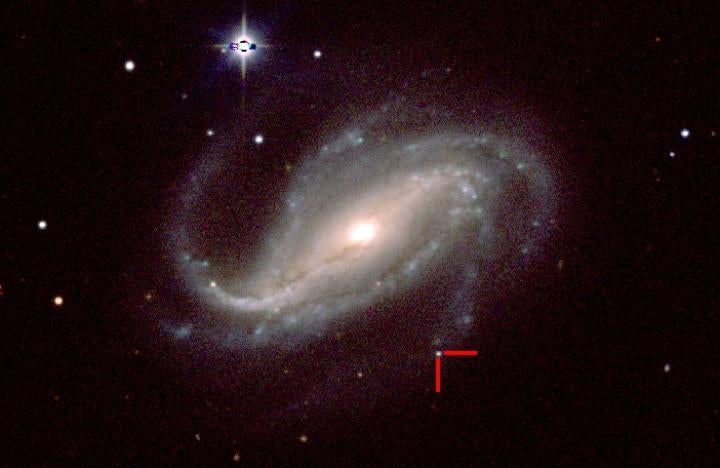An amateur astronomer captured an impossible photo of an exploding star
While taking a series of short-exposure photographs to test his 16-inch telescope, Argentinian amateur astronomer Victor Buso caught the image of an initial burst of light from an exploding star in a distant galaxy. It was a remarkable discovery.


While taking a series of short-exposure photographs to test his 16-inch telescope, Argentinian amateur astronomer Victor Buso caught the image of an initial burst of light from an exploding star in a distant galaxy. It was a remarkable discovery.
The chances of such a discovery are one in 10 million—or perhaps even one in 100 million, said Melina Bersten, a professional astronomer at the Instituto de Astrofísica de La Plata in Argentina.
The burst of light from a supernova, called a “shock breakout,” occurs when a supersonic pressure wave from the star’s exploding core hits the gas at the star’s surface. The impact causes the gas to heat to an extremely high temperature and rapidly emit light for a fleeting moment. Until Buso’s photo, no one had captured such an image because stars explode seemingly at random.
“Professional astronomers have long been searching for such an event,” said UC Berkeley astronomer Alex Filippenko, who was among the international research team that conducted follow-up observations.
Buso quickly noticed the unusual burst of light in his photos and contacted an international group of astronomers. Over the next two months, both amateur and professionals jointly collected data on the explosion, called SN 2016gkg, in the spiral galaxy NGC 613. The new data provides rare insight into a star’s catastrophic demise, which was published today (Feb. 22) in Nature.
From their analysis, the astronomers determined that the explosion was a Type IIb supernova—the explosion of a massive star caused by the loss of most of its hydrogen envelope—a category originally identified by Filippenko in 1987. The group also estimated that the initial mass of the star was about 20 times the mass of our sun. Over time it shed most of that mass, likely to a companion star, to about five solar masses before its explosion.
“Observations of stars in the first moments they begin exploding provide information that cannot be directly obtained in any other way,” said Filippenko. ”It’s like winning the cosmic lottery.”